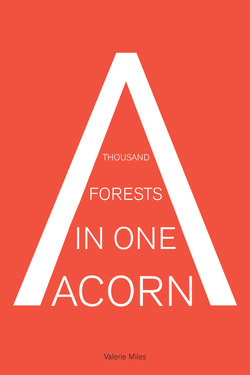Читать книгу A Thousand Forests in One Acorn - Valerie Miles - Страница 16
На сайте Литреса книга снята с продажи.
ОглавлениеTHE ACORN
THE TORTURE OF DOCTOR JOHNSON
If there’s anything good in Las ciegas hormigas, it’s this chapter. I wrote it more than fifty years ago, but I still remember what I thought when I finished it: why isn’t the whole novel like this, and why won’t most of what I write in the future be like this? It’s the felicitous fusion of narrative language with what I hoped for and still hope for, that synthesis of rhythm, continual forward movement, ideas and more ideas, humor, expressive transparency, something like the inescapable music of a deceitfully playful Mozart that we get hopelessly hooked on. A passion for my creations? Maybe. But here the protagonists are sketched out for the entire novel, their courtship, as recounted by Josefa, establishes the roots of Sabas, whose epic downfall you can already imagine, along with Josefa’s own unconditional surrender to Sabas’s impossible stubbornness. Which buttons do you have to press to yield something like this? I have no idea.
IN CONVERSATION WITH THE DEAD
Las ciegas hormigas wouldn’t have existed without Faulkner. Even the critics have said so. He taught me to put myself in another’s place, which is to say, in a character’s place. And in order to accomplish that you have to show them instead of simply telling about them. The divine law for a fiction writer is to show, not tell. García Márquez later taught me to be irreverent by using humor. To turn a story into pure musical rhythm. I wish I were still learning.
CODA
Does Faulkner’s Yoknapatawpha serve as a model for your literary Getxo? Have you read a lot of American literature?
I spent my childhood and adolescence in Getxo, and those times were influenced by the coast, the sea, and the people who lived off the land, surviving by their own hands. I returned to that world when I wanted to novelize my epic conceptualization of the world. I found in the American writers what I hadn’t found in European writers, at least not in the ones that Franco allowed us to read. When the Casa Americana Library opened in Bilbao around 1955, sponsored by the United States, I imagine, it brought fresh air, literature that was powerful, social, epic, and above all, free. Steinbeck, Faulkner, Hemingway, Santayana, Capote, Dos Passos . . . it was so unlike the generally placid European literature. It was a leap from one continent, with its obligations already met, to another that was at the height of expansion. Its literature breathed liberty. It was my new path.
